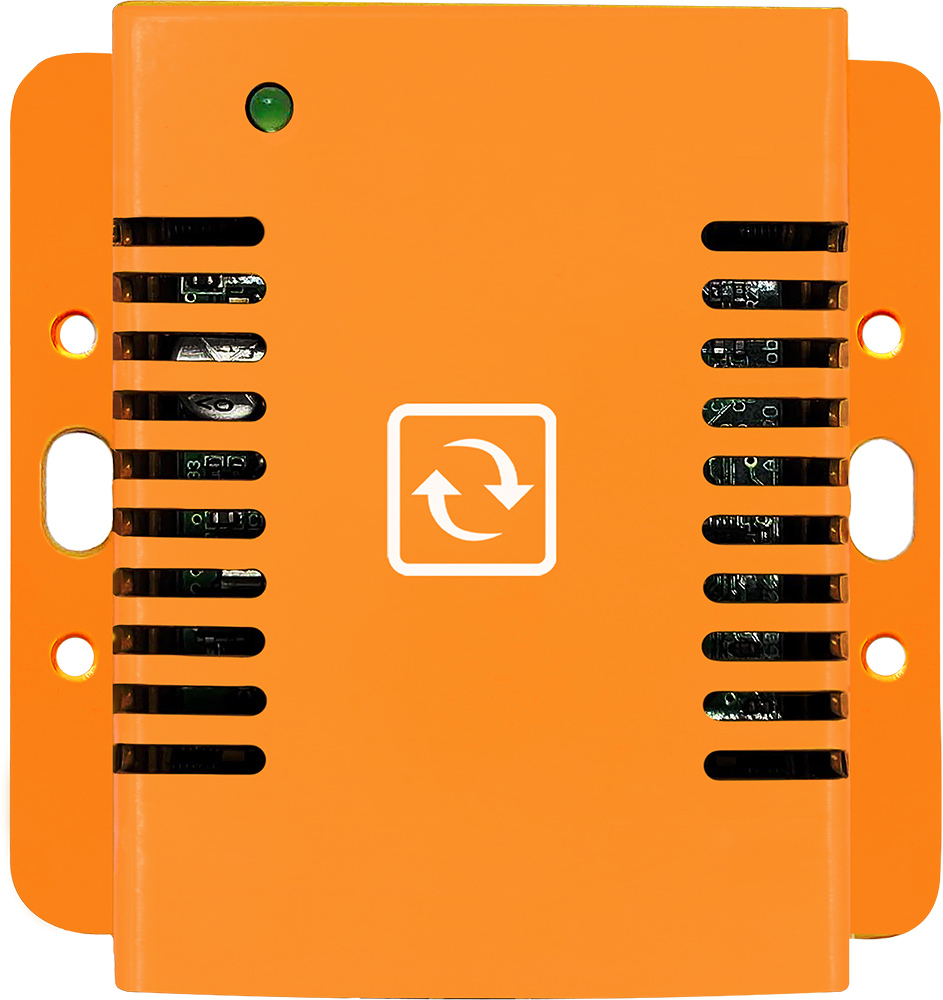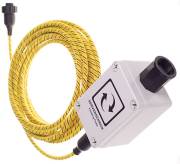
-
More
Temperature & Humidity Monitoring
Close
The ambient temperature measurement checks if your cooling is still operating and if the room has the desired temperature setting. Combined with the humidity sensors, it ensures that your equipment is running within limits.
Temperature & Humidity Sensor
-
More
Temperature & Humidity Monitoring
Close
The ambient temperature measurement checks if your cooling is still operating and if the room has the desired temperature setting. Combined with the humidity sensors, it ensures that your equipment is running within limits.
Temperature & Humidity Sensor
-
More
Battery Monitoring System
Close
The battery monitoring system monitors the temperature, resistance and voltage of your cells. The string is monitored for its current and impedance.
Battery Monitoring Sensor
-
More
Water Leak & Ingress
Close
Water is the enemy of electricity. The primary source is a leaking cooling unit. Then you have water leaks from above room, street flooding, pipe bursts and many more. This leak sensor is a 5m water leak sensitive cable so that it can detect water intrusion anywhere in the Edge Data Center.
Water Sensing Sensor & Cable
-
More
Thermal Camera Sensors
Close
Thermal runaways of equipment will go undetected with traditional temperature sensors as air conditioning units will try to compensate the heat problem. The thermal camera sensor looks at the equipment and monitors its surface temperature in 4800 points, every 2 seconds.
Thermal Camera Sensor
-
More
PM Particle Sensor
Close
Dust accumulation in equipment will affect the reliability of systems. At first power usage will increase due to the harder working fans and CPU. Electrical issues may occur due to shortage caused by particles.
Particle Matter Sensor
-
More
Power Failure
Close
The power failure sensor enables you to get alerts when the main power goes out. The sensor can be used to safely shutdown the servers in the event of a detected power failure.
Power Failure Sensor
-
More
Hydrogen (H2) Gas Sensor
Close
Hydrogen (H2) is a potentially explosive gas released by lead acid batteries.
The sensor monitors the hydrogen concentration in the air in % LEL.
H2 Gas Sensing
-
More
Carbon Dioxide (CO2) Gas Sensor (CMOS)
Close
Digital sensor designed for monitoring and measuring the level of Carbon Dioxide (CO2) in the ambient air.
CO2 Gas Sensing
-
More
Carbon Dioxide (CO2) Gas Sensor (CMOS)
Close
Digital sensor designed for monitoring and measuring the level of Carbon Dioxide (CO2) in the ambient air.
CO2 Gas Sensing
-
More
Daisy Chain Temperature & Humidity Sensors
Close
ASHRAE recommends 6 temperature sensors per rack. Gartner recommends a minimum of 3 temperature sensors per rack: 2 on the intake side (top & bottom) and 1 one at the top back (outtake). The daisy chain temperature (humidity) sensors are designed to solve the limitations of standalone sensors.
Daisy Chain Temperature Sensor
-
More
Grounding / Earthing Sensor
Close
The Grounding Monitoring system connects to the facilities or sites electrical ground system. It checks non stop the grounding’s resistance. This allows to get early warning on the grounding system.
Earthing / Grounding Sensor

Temperature sensors: These sensors can be used to monitor the temperature in the container and alert maintenance staff if it exceeds a certain threshold. The benefit of using temperature sensors is to ensure that the temperature in the container is within an acceptable range, as extreme temperatures can cause equipment to fail or become damaged.
Humidity sensors: These sensors can be used to monitor the humidity in the container and alert maintenance staff if it falls outside of an acceptable range. The benefit of using humidity sensors is to ensure that the humidity in the container is within an acceptable range, as high humidity can cause equipment to corrode or malfunction, while low humidity can cause static electricity and damage electronic components.
Airflow sensors: These sensors can be used to monitor the airflow in the container and alert maintenance staff if it falls outside of an acceptable range. The benefit of using airflow sensors is to ensure that there is adequate ventilation in the container, as poor airflow can cause equipment to overheat and malfunction.
Dust sensors: These sensors can be used to detect the presence of dust in the container and alert maintenance staff if it exceeds a certain level. The benefit of using dust sensors is to ensure that the container is kept clean, as dust can clog filters, obstruct airflow, and cause equipment to malfunction.
Atmospheric corrosion & corrosive gases sensors: These sensors can be used to detect corrosion or corrosive gases in the container and alert maintenance staff if either is detected. The benefit of using these sensors is to identify corrosion or corrosive gases early, before they cause significant damage, and take preventive action to extend the life of equipment.
Smoke/fire sensors: These sensors can be used to detect smoke or fire in the container and alert maintenance staff if either is detected. The benefit of using smoke/fire sensors is to ensure the safety of the container by detecting fires early and alerting maintenance staff to take corrective action.
Water leak sensors: These sensors can be used to detect water leaks and alert maintenance staff if any are detected. The benefit of using water leak sensors is to prevent water damage to equipment and the container itself, as water can cause serious damage if left unchecked.
Vibration sensors: These sensors can be used to detect vibration and alert maintenance staff if any unusual vibration is detected. The benefit of using vibration sensors is to identify potential problems with equipment, such as imbalanced loads or misalignment, and take corrective action before the equipment fails.
Power quality sensors: These sensors can be used to monitor the quality of the electrical power in the container and alert maintenance staff if any issues are detected, such as voltage spikes or sags. The benefit of using power quality sensors is to ensure that the electrical power in the container is stable and of high quality, as poor power quality can cause equipment to malfunction or fail.
Earthing sensors: These sensors can be used to monitor the earthing system in the container and alert maintenance staff if there are any issues with the earthing. The benefit of using earthing sensors is to ensure that the earthing system is functioning properly and safely, as a faulty earthing system can cause electrical shocks or equipment damage.
Refrigerant leak sensors: These sensors can be used to detect refrigerant leaks in the container and alert maintenance staff if any are detected. The benefit of using refrigerant leak sensors is to prevent leaks from occurring and to ensure that the refrigeration system is operating efficiently, as refrigerant leaks can cause the system to lose efficiency and potentially cause equipment damage.